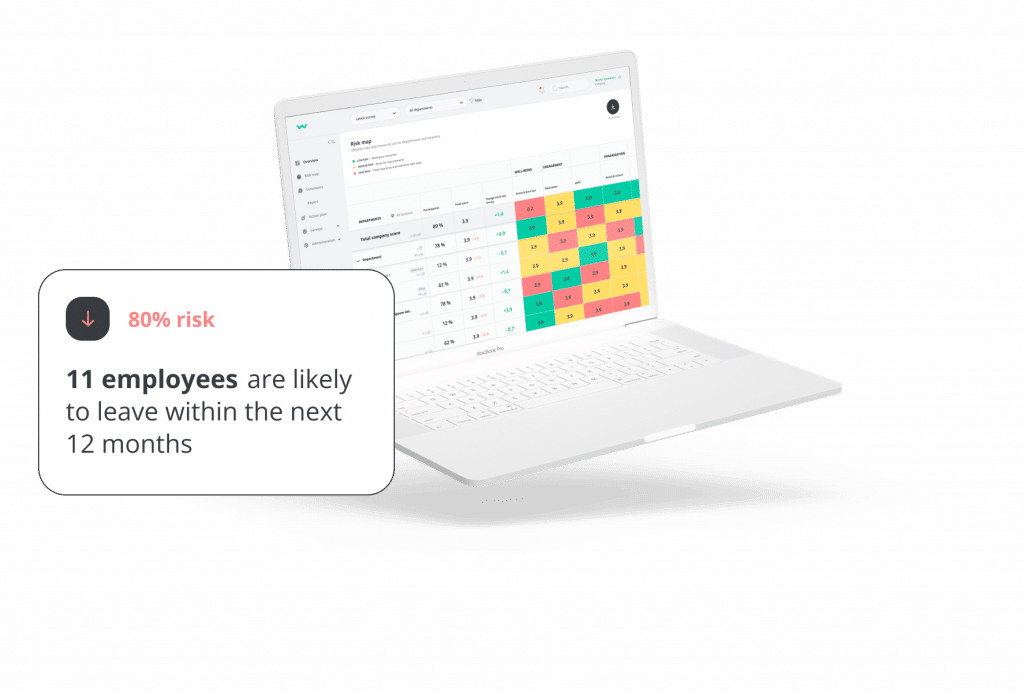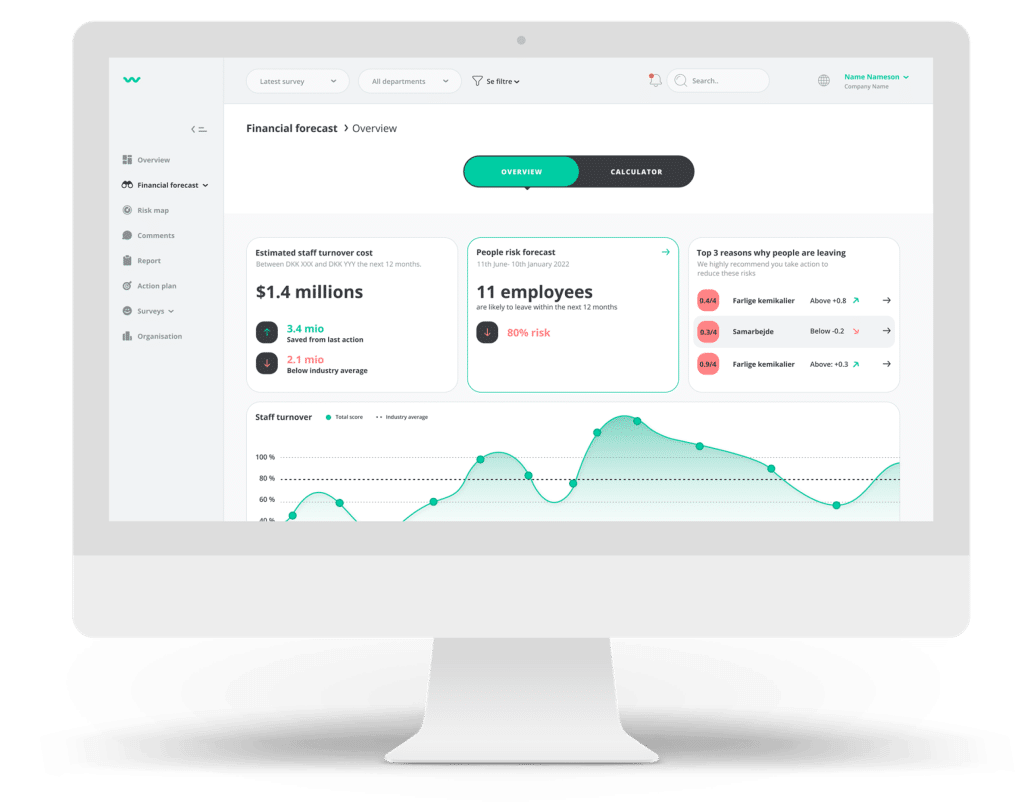What do the most productive workplaces have in common? The answer comes down to a very simple truth – they have a high engagement level among their employees.
Later in this article I will tell you about how you can boost your employees’ engagement and retention with our HR Impact platform, Woba.io – but first, let’s delve into the significance of employee engagement.
Why is Employee Engagement important?
The traditional notion that “the customer is king” has evolved. Modern companies now understand that employee well-being is essential for delivering top-notch customer service. This translates to creating a healthy workplace that cultivates engagement, productivity, and employee loyalty, which has become crucial for business success.
Employee Engagement holds significant importance in strategic HR for several compelling reasons. Research demonstrates that engaged employees yield various positive outcomes, including:
- Reduced absenteeism
- Higher commitment & productivity
- Higher staff retention
- Lower Turnover
- Happier customers
As a result, a wide spectrum of people leaders – ranging from HR professionals to Chief People Officers and People & Culture managers – grapple with a significant challenge: How do we effectively measure employee engagement? In simpler terms, how can we tap into the collective intelligence and inner states of the entire organization? And how can we translate this knowledge into tangible business impact? This intricate question demands a comprehensive breakdown, and I’ll endeavor to provide one.
The story behind Employee Engagement
The foundation of Employee Engagement still holds relevance, dating back to 1990 when Professor William A. Kahn first introduced the concept of Work Engagement. Subsequent research has consistently revealed the links between engagement and positive outcomes like job satisfaction and strong workplace support.
A key figure in this field is Professor Wilmar Schaufeli, an expert in Organizational Psychology. His research on job burnout and employee engagement underpins the scientifically-backed indicators we employ in our Employee Engagement Survey.
At the Heart of Employee Engagement: The UWES scale
“Employee Engagement is a positive, fulfilling, work-related state of mind that is characterized by vigor, dedication, and absorption”
Schaufeli’s significant contribution is the Utrecht Work Engagement Scale (UWES). This tool remains relevant for measuring engagement. Schaufeli defines engagement as “…a positive, fulfilling, work-related state of mind that is characterized by vigor, dedication, and absorption,” encompassing three dimensions:
- Vigor: Encompassing energy and resilience, along with a willingness to tackle challenges throughout the workday.
- Dedication: Reflecting a profound dedication to work, where it feels meaningful and exhilarating.
- Absorption: Representing a state where work absorbs you entirely, causing time to fly by and making it challenging to stop.
These aspects are gauged through a set of 17 questions. Research confirms that the scale is reliable and valid, establishing it as the most effective approach to measuring employee engagement.
Allow me to distill the above research on employee engagement into a concrete, step-by-step process for measuring employee engagement.
How do I translate the employees’ feedback from the engagement survey?
Now you might be left with the question: “Okay, now I know what to measure – but how can I easily translate the employees’ feedback from the engagement survey into concrete positive outcomes, like reducing sick leaves and resignations?” No tools on the market can solve this challenge – except for the HR platform, Woba.io.
In the following section, I will specifically show you how with Woba by your side, you can make a significant and measurable difference – not only for your employees but also for the bottom line.
How to measure Employee Engagement with Woba?
Step 1 – Choose the right research-validated questions:
We’ve made this process incredibly easy for you, allowing you to focus on optimizing engagement among your employees. Building on the aforementioned research, we’ve created a comprehensive and research-validated Employee Engagement measurement guide that you can download right away.
Step 2 – Schedule an Engagement Survey:
Simply schedule our 360 Pulse Engagement Survey (on a weekly, monthly, quarterly, or yearly basis) to measure your employees’ engagement levels. Rather than conducting an annual Engagement Survey, we highly recommend frequent surveys to always have your finger on the pulse. This approach helps identify early warning trends—be they positive or negative—that could impact employee engagement. A key feature is ensuring you consistently follow up on survey results to track positive changes. In Step 4, I will explain how seamlessly Woba facilitates this process.
Step 3 – Analyze & predict:
HR, HSE and managers get an seamless access to Woba’s management analytics. This is a key tool for you to get a real-time picture of your employees engagement level and where you can predict the most important early warning trends down the road so you can take action right away.

Step 4 – Implement proactive actions:
The most important step when you run an engagement survey is to follow-up. That is why we at Woba has been the market’s most easy-to-use action planning tool. With one click you can simply identify a risk, create an action plan and track your progress that impact your biggest people KPI’s as absenteeism, turnover, engagement and burnout. You can set your KPI’s target directly in Woba.
Step 5 – Evaluate ROI impact:
Woba is more than a survey tool; it is a game-changer for HR impact. Bid farewell to spending exorbitant sums on consultancy agencies to calculate the return on investment for your engagement initiatives. We’ve developed an algorithm that automatically quantifies the ROI business impact resulting from your actions in Woba. What’s not to like?

Ready to Elevate Your HR strategy?
Our vision is to create a better world to work by revolutionizing your HR landscape. Our hearts beat for making you in HR the central driver of business impact. With Woba by your side, this vision can turn into reality.
I’m excited to demonstrate how Woba can make a significant difference in achieving your company’s most ambitious HR objectives.
Schedule a meeting with me to explore the transformative potential of Woba.io.













